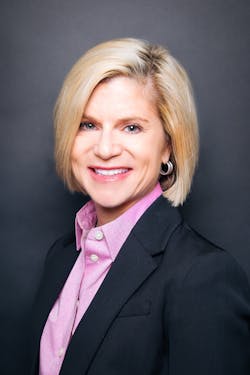From Civil Engineer to Airfield Engineer – A Rewarding Career in the Aviation Industry
Sometimes, our careers take us in a totally different direction from what we originally planned — I'm no exception. As an undergraduate student studying civil engineering at the University of Colorado, I had no idea that there existed a specialty in airfield planning and design for airports. After graduation in 1988, my first engineering job was with a land development firm where my work involved preparing site plans for developers. I realized quickly that development companies hire civil engineers because they can take a concept design and turn it into a shovel-ready project to build, which is a big part of managing any type of project from start to finish.
Around 1989, the economy was weakening because of a restrictive monetary policy enacted by the Federal Reserve, which triggered a recession due in large part to loss of consumer and business confidence and the rise in the price of oil. As a result, development slowed down, and I was out of a job within a few years. As a recent grad with limited experience, I sought out an entry-level position with a firm specializing in aviation and enrolled in an aviation continuing education class at Berkeley to feed my interest and passion for the industry. Nearly two decades after landing that job, I am still here, and my career continues to evolve.
Today, I serve as an airfield engineer (airside design manager) working for HNTB Corporation, a national infrastructure firm that is ranked in the top six airport consulting firms in the United States, according to Engineering News-Record Top Design Firms Sourcebook for 2017.
It is encouraging to see that today’s engineering curriculums are changing, and more student engineers are being exposed to a wide range of career opportunities in the aviation industry.
HNTB in particular is involved in numerous educational programs designed to create awareness among young professionals and women about careers in engineering, architecture and planning, including:
- Cal State University’s Airport Planning Course, where aviation planning and engineering professionals deliver guest lectures that supplement the university’s airport planning curriculum. Guest lecturers share details on notable airport projects and case studies, providing valuable insight to highlight potential career paths within the industry.
- The annual collaborative SPARK LA partnership between the City of Los Angeles and the firm offers a free afterschool program to supplement the focus on a Science, Technology, Engineering and Math (STEM) curriculum at the Girls Academic Leadership Academy in Los Angeles. The goal of the program is to attract more female students to pursue degrees and professions where they are traditionally underrepresented. Sessions feature aviation and airport design, where students explored engineering and design challenges alongside industry professionals.
For those who are interested in entering the aviation industry as an airfield engineer, I share the following advice.
Study beyond the technical
No one ever told me that as an engineer I would have to be a sales person, a proficient writer and good communicator—and possess managerial skills. Technical skills are just one part of the job, so it’s important to refine your non-technical capabilities by:
- Taking public speaking classes
- Participating in mock networking business events
- Enrolling in technical writing classes
- Developing social skills
Intern at a firm for their aviation group
Don’t focus solely on the technical duties; broaden your skills by volunteering to:
- Attend meetings with clients, contractors, community, etc.
- Go on site visits
- Learn marketing strategies and proposal writing
- Participate in industry events and make connections
As an entry level airfield engineer, here are some of my suggestions to consider:
- Take advantage of all training opportunities within the firm and at universities and professional continuing educational seminars
- Find and work with a mentor within or outside the firm
- Broaden your areas of expertise. If you are an airfield engineer, get involved in an airport planning project
- Learn how to write scope and develop fee proposals
As industries and the economy evolves, so should you. It is always a journey, and not a destination.
- Be your own advocate
- Volunteer
- Do not get pigeonholed in a technical area
At HNTB, I have been fortunate to have the opportunity to play a significant role in a large project—from the very beginning to the end of construction and beyond. The Green Build Project at SAN is my all-time personal best. I participated in every aspect including winning the project, contract negotiations, leading the validation then design phases, providing on-site construction support and project close-out. It's an example I am proud of and one which demonstrates that being able to deliver a holistic experience beyond the theoretical—relationship and team building, learning from other disciplines and field experiences, incorporating constructability into design by working with the contractor in a design-build relationship—opens the door to a wide variety of excellent career opportunities in this industry.
Megan Monticone, PE, works for HNTB Corporation as an airside design engineer, specializing in airport engineering and planning. She has extensive experience in the design of airfield improvements, including runways, aprons, taxiways, and other airfield related items that must comply with FAA design standards. Her experience includes San Diego International airport (Green Build); Many airfield projects at LAX, including Tom Bradley International Terminal East Apron Construction and Demolition; and Long Beach Airport Runway 25L Reconstruction. Contact her at [email protected].



